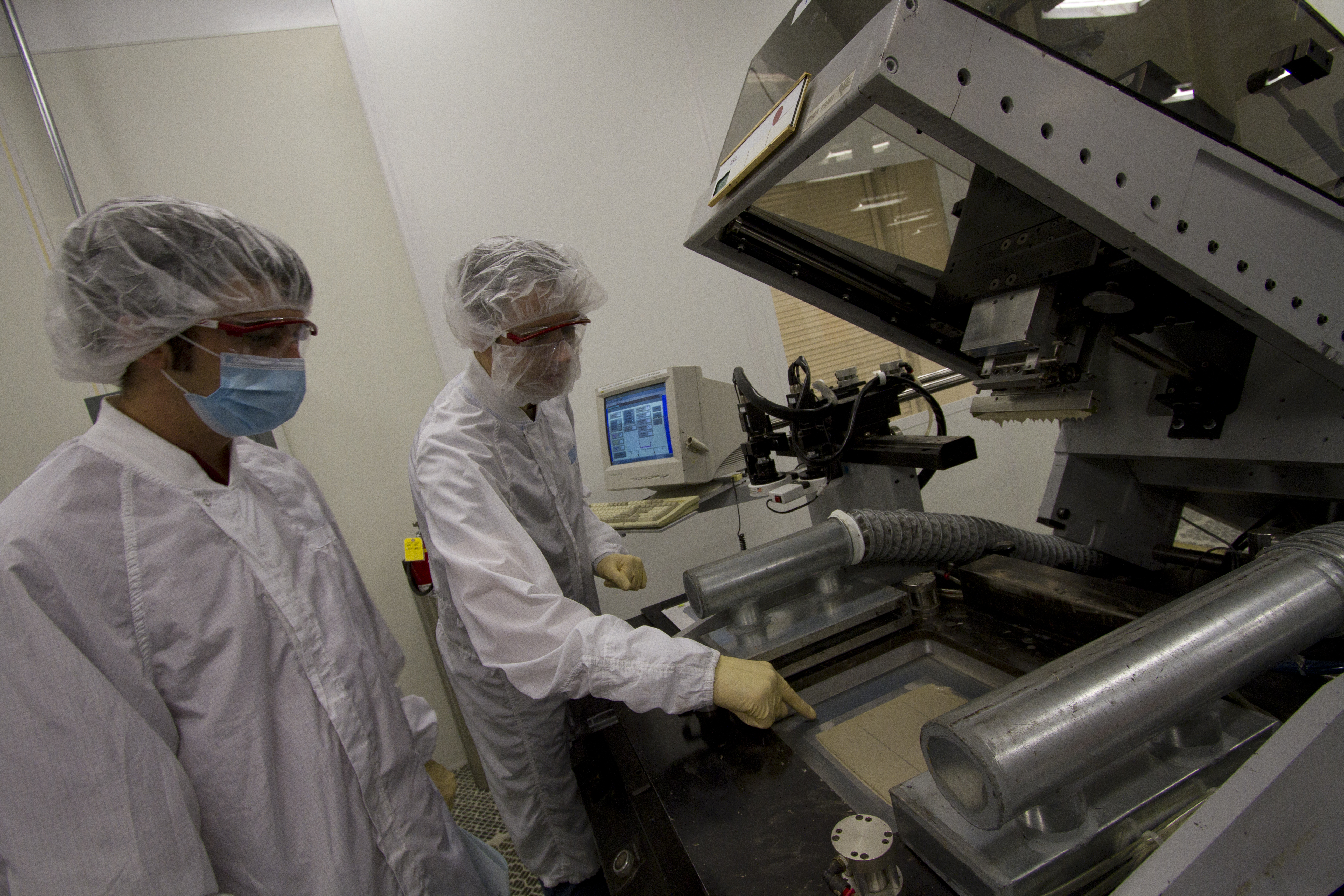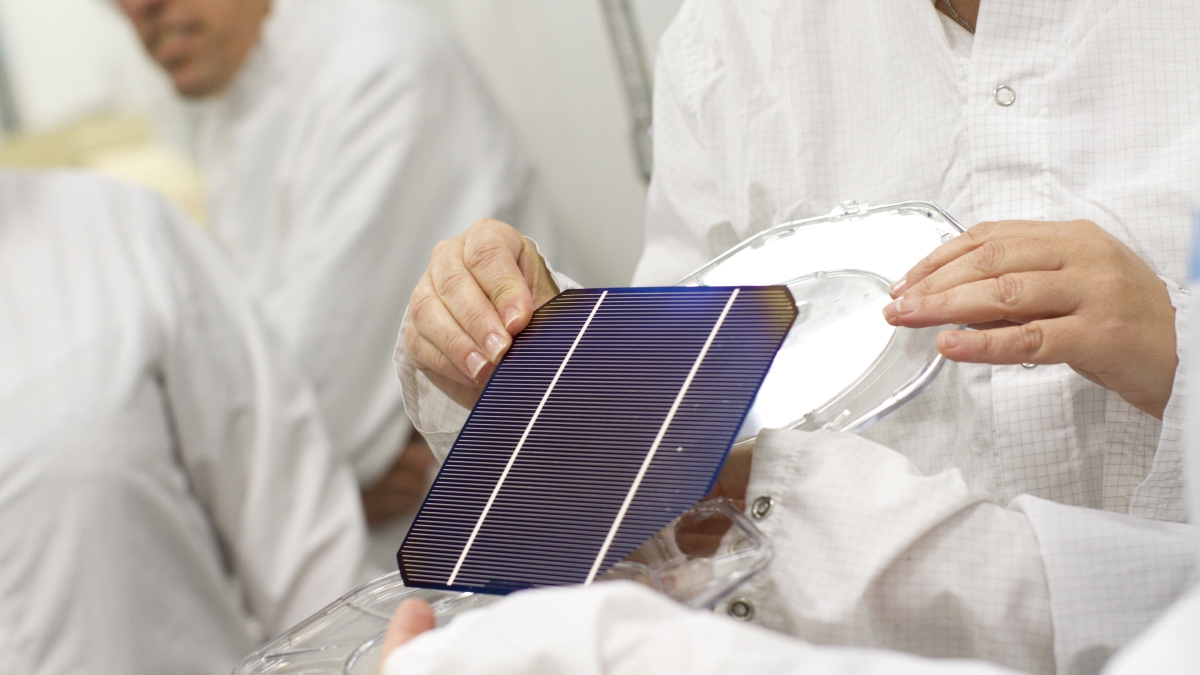Federal representatives are visiting Arizona State University’s powerhouse photovoltaics lab this week to review progress made in research on the energy of the future.
ASU’s Quantum Energy and Sustainable Solar Technologies Engineering Research Center is the largest photovoltaic research facility in the country, and the only one funded by the National Science Foundation and the Department of Energy.
In the past year, more solar has been installed than any other source of electricity. Photovoltaic installations were up 95 percent in 2016. There are more jobs in solar than exist in oil or gas extraction. It’s a power source supported by all sides of the political spectrum.
Society’s advancement is tied to the amount of energy it can harness, center director Christiana Honsberg said. Right now, compared with automotive technology, solar cells are at a Ford Model T level.
Solar is at a tipping point, Honsberg said. In the next 20 years, about a trillion dollars will be invested.
“In a lot of ways, the goal is to define a path that helps that trillion-dollar industry become more sustainable and addresses a lot of the critical issues,” she said.
The center identifies technical barriers to sustained improvement — high efficiency, scalability and sustainability — and tackles them by breaking down research barriers.
“Our central defining feature is that you can continue to improve both the cost of solar at the same time you improve its performance,” Honsberg said. “You continue to get higher efficiency and lower cost simultaneously. That’s a little bit hard to do. As cars improve, they get more expensive. … Semiconductor technologies get better and cheaper, but most things don’t get better and cheaper.”

ASU Quantum Energy and Sustainable Solar Technologies Engineering researchers deposit one of many layers while building a solar cell. Photo by Jessica Hochreiter/ASU
ASU’s center opened in 2010 and has been ramping up every year, adding facilities and faculty. It started with two faculty members and now has seven.
It holds several world records.
“Some of them are true world records, and some are voltage records,” Honsberg said. “The term ‘world record’ is very precisely defined in solar. … The fact that we hold the voltage record in every commercially relevant material is significant in that our physics and ideas are better than anything else out there.”
Engineering Research Centers are the largest awards bestowed by the National Science Foundation. At any given time, there are only 20 ERCs operating in the country. It’s a prestigious and rare award. Only one-quarter of 1 percent of applicants to the program win funding. It’s a 10-year award, given only after five stringent reviews.
ASU has two of them.
“ASU has really ramped up in the ERCs,” Honsberg said. “There aren’t a whole lot of ERCs, given the very, very broad mission that NSF funds in.”
This week’s visit by a 15-member team is one of three funding reviews during the 10-year period of the award. As well as learning what taxpayer dollars are discovering, they’ll get a look inside how ASU operates.
“We are absolutely embedded into ASU’s mission,” Honsberg said. “Every single aspect of what we do fits in directly. One of the key things we want to do is change the standard university picture of people just sitting in a lab producing papers in obscure journals to actually being able to tackle larger problems and make a larger impact.
“If you’re going to do that, the single-faculty, single-lab model is not the right model. … We want to not only make an impact on a big problem, but we’re also working to develop how you optimally combine many different universities, different (principal investigators), how you integrate education in.”
Top photo: Solar cells — such as this one being examined by researchers at ASU’s Quantum Energy and Sustainable Solar Technologies Engineering Research Center — are poised to become more efficient and cheaper thanks to an influx of investments. Photo by Jessica Hochreiter/ASU
More Science and technology

ASU-led space telescope is ready to fly
The Star Planet Activity Research CubeSat, or SPARCS, a small space telescope that will monitor the flares and sunspot activity of low-mass stars, has now passed its pre-shipment review by NASA.…

ASU at the heart of the state's revitalized microelectronics industry
A stronger local economy, more reliable technology, and a future where our computers and devices do the impossible: that’s the transformation ASU is driving through its microelectronics research…

Breakthrough copper alloy achieves unprecedented high-temperature performance
A team of researchers from Arizona State University, the U.S. Army Research Laboratory, Lehigh University and Louisiana State University has developed a groundbreaking high-temperature copper alloy…


